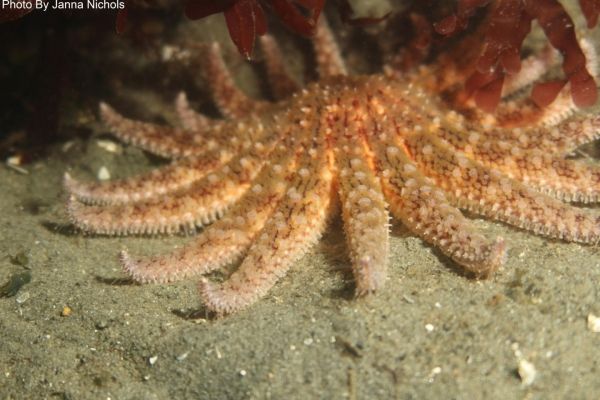The iconic sunflower sea star has been listed as critically endangered by the International Union for Conservation of Nature following a groundbreaking population study led by Oregon State University and The Nature Conservancy.
“These sea stars used to be easy to find and were a hit with students and divers because they are unforgettable – they can be as big as a trash bin lid with 20 slimy arms covered in suction cups,” said OSU’s Sarah Gravem, a research associate in the College of Science and the lead author on the study. “Unfortunately, your chances of finding one now are next to nothing in most of the contiguous United States – this listing is one step above extinction – and I don’t think they’re coming back without help like captive rearing and reintroduction and reducing direct harvest and accidental harvest.”
More than 60 institutions joined Oregon State and The Nature Conservancy in the population study on the sunflower sea star, known scientifically as Pycnopodia helianthoides, which plays an important role in maintaining kelp forests, and thus sustaining marine life, along the West Coast from Alaska to Baja, California.
Read more at: Oregon State University
Sunflower sea star (Photo Credit: Janna Nichols)


